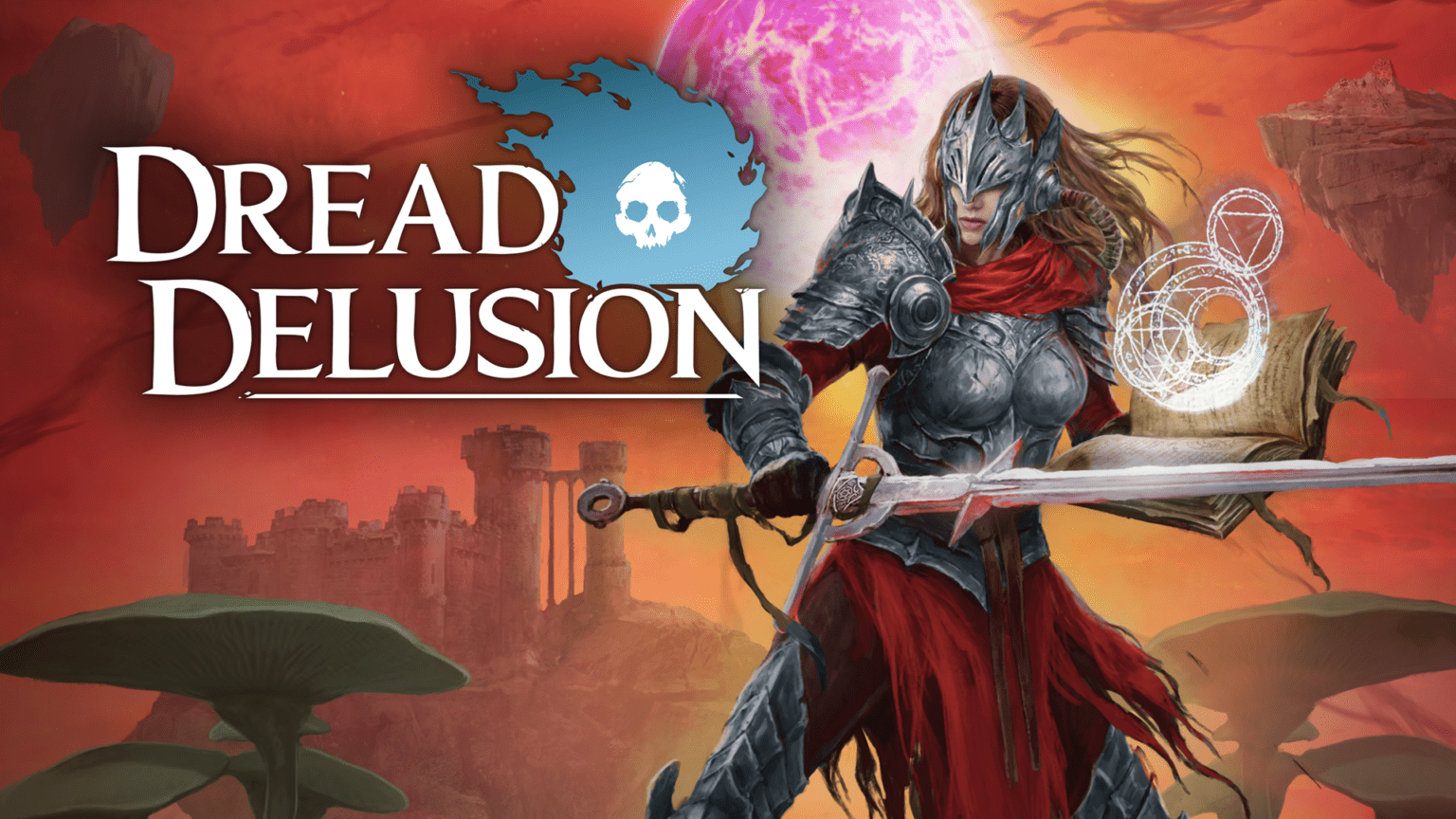We’ve seen plenty of indie games paying homage to older styles of games and their aesthetics. Early 3D on 32-bit consoles is generally looked at with less fondness than 2D sprites from the 90’s. Dread Delusion attempts to use that specific 3D style as its strength however, whilst delivering an explorative first person RPG.
Nailing a graphical style
Early PS1 3D didn’t age particularly well, but its roughness could unintentionally create a rather eerie and unsettling environment. Dread Delusion aims to deliver just that, creating a rather alien world. And yes, that includes those rough, sharp polygons with low resolution textures that can’t help but do some warping and flickering. These ‘glitches’ can all be turned off and the resolution increased if you just can’t stand this archaic look. However, keeping it raw is an absolute mood!
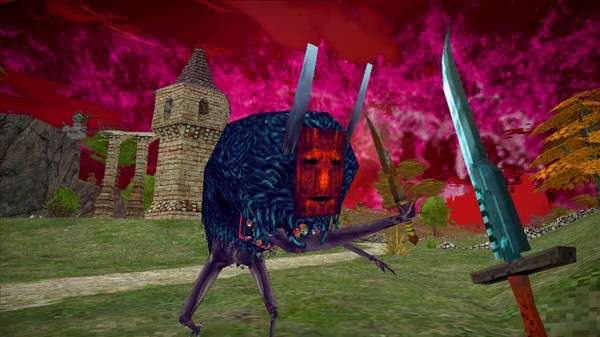
The whole setting and its inhabitants, flora and fauna are all uniquely and fittingly strange and often times somewhat creepy. The game does incorporate modern capabilities as well, to allow for much more detail, variety, a snappy framerate and an impressive view distance that will prove very useful. This is because exploration is very old school.
Selectively old school
When you start out, there is no map. You get to make that as you find landmarks. But even then, there are no quest markers, so it’s crucial to pay attention to dialogue for direction. Especially when not familiar with the lands yet, you’ll occasionally need to whip out the ol’ compass and physically look for landmarks to orient yourself. You’re either going to love or hate this feature… and yes, I do think they actually call it a feature.
But it really tries to capture that feel of older first person RPG’s. Though the RPG elements are very light here. At the start of the game you’ll be creating your character and filling out their background. This has some very minor textual changes throughout the game’s interactions with NPC’s, but mainly defines your starting stats and skills.
There’s 4 stats, each governing 2 specific skills. These directly affect gameplay, but may also be required in skill checks. Throughout your adventures you’ll find items called ‘delusions’, usually at the end of a dungeon, after completing a quest or hidden away in some secret corner or behind a locked door. These function as your experience points. Collect enough and you can allocate another stat point.
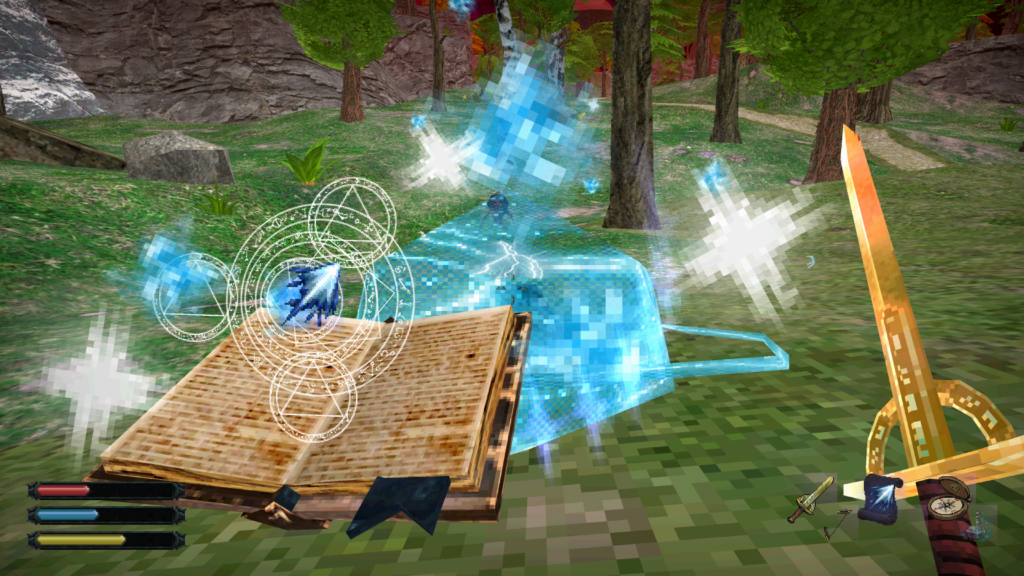
Destined for greatness
You’ll also find items that increase specific skills and eventually it becomes apparent that no matter what you choose at the start, you will become a king of all trades. This discourages repeat playthroughs, but it’s perfect if you love a power fantasy or are scared of missing out on something based on your build.
It makes the first part of the game by far the most enjoyable for me, where you will still encounter spots you can’t enter and you may need to think of other ways to get around a problem. The game does a good job of usually offering at least 2 approaches to every obstacle. Past the halfway point, it’s usually just a matter of putting on the right shirt for the job however. Also, the game never really evolves it’s solutions. Once you learn how one secret works, you’ll keep seeing it repeated throughout and very few new mechanics are introduced later in the game.
Unfortunately the game is very easy in general. There’s a great variety of enemy designs and some look absolutely amazing, but they either slowly swing at you or shoot something at you. There is little variety in actual enemy patterns unfortunately and next to no memorable or special encounters and a severe lack of actual boss fights.
Way too rich to do all this hard work!
You’ll also quickly be swimming in resources, like coins, arrows, throwing weapons and handy potions to keep you going. There are some houses to buy which can be upgraded along with some equipment. So you have something to dump some resources in, but you’ll soon have so much stuff, you won’t know what to do with it.
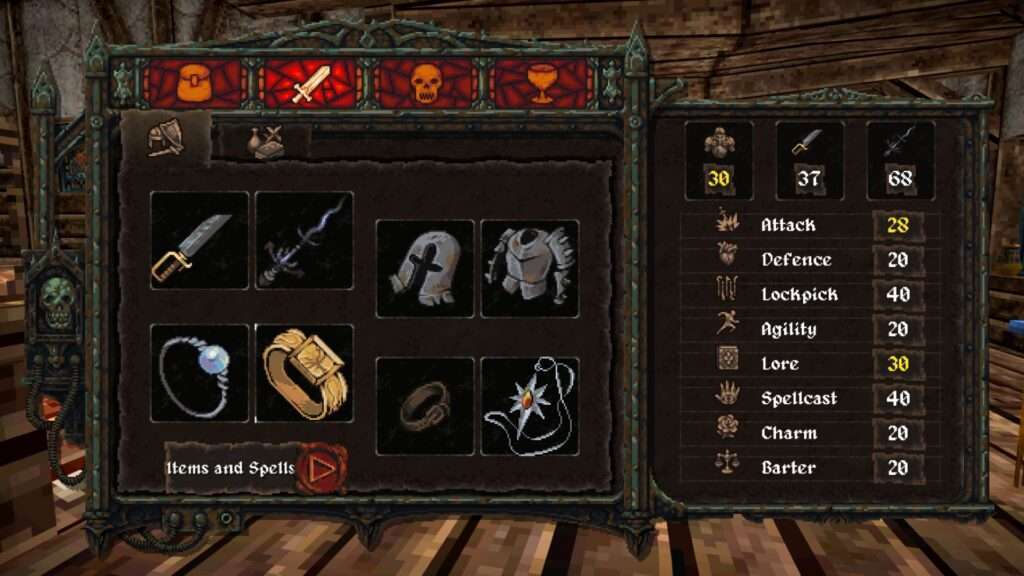
Really, what kept me most engaged with the game was its world and the stories the various regions and side quests tell. The game takes place in a post-apocalyptic world where the surface has become inhospitable and the remnants of life are up in the skies on various islands.
The Apostatic Union holds most power after the God War and are out to rid the lands of all gods and their worshippers. A respected officer of the Union has gone rogue and formed a mercenary band and made her way to the Oneiric Isles, where the Union is barely established and thus houses some other factions and perhaps even gods to content with.
Doom the saved, or save the doomed?
For such dangerous domains, you’d best send in cannon fodder and the most expendable of individuals, which is where you come in. As prisoner of the Union you set out to chase down this rogue agent… eventually. First you’ll need to gather information, hunt down some ex members of her mercenary band and solve everyone’s problems on those islands of course!
Each region you go through rewards you with some interesting stories and these play out through various side quests that often times feature different outcomes based on your choices. Ultimately, these choices matter little, but through some pretty good writing the choices feel meaningful.
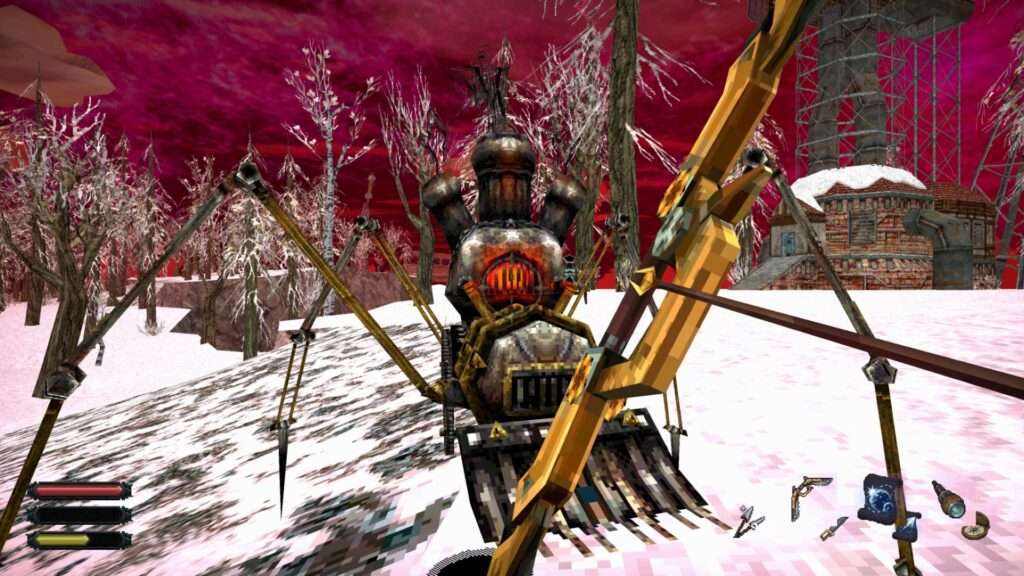
All dialogue is text based, with the strange exception of the character creation part of the game and the intro video. It’s well written, but can be heavy on the amount of text and I found the font, while fitting for the game world, rather hard to read. I would love to see an option for a less stylized font. Another small visual annoyance was the crosshair, which is a darkish brown and blends in with about half the game world!
Uneven progression
Even though all the regions are interesting to learn about, not all are equal in actual design. The first region is jam packed with little secrets, but later regions lack this great design and feel a bit barren in comparison. Even in the early parts though, I felt a bit punished for wandering off to explore on my own. A few time I came across a dungeon that was pretty fun to explore, but all the way at the end had a door I needed a key for from a quest. Luckily there’s usually a shortcut at the end to make a next visit a lot faster, but it felt disappointing regardless.
Traveling, especially at the start, can also be pretty time consuming. Apart from getting lost all the time, there is limited ways to fast travel. These do open up more as you go along though and all the way at the end of the game you get your own airship, which really opens up exploration. Which is kind of fun… but as stated previously, by that time you are already a godlike entity yourself and the repetition of the actual gameplay will just drive you to get to the story bits and be done with it.
If you’re in for challenging and engaging combat, daring dungeon dives, devious traps and clever puzzles, you’d best look elsewhere. However, if you’re in for a fairly casual exploration of strange lands and get drawn into some interesting lore, Dread Delusion can still deliver a fun experience worth your time!
Pros
- Great use of graphics to set the mood
- Good writing and interesting lore
Cons
- Shallow and unbalanced progression
- Lack of challenge and variety
- Rather poor audio design


